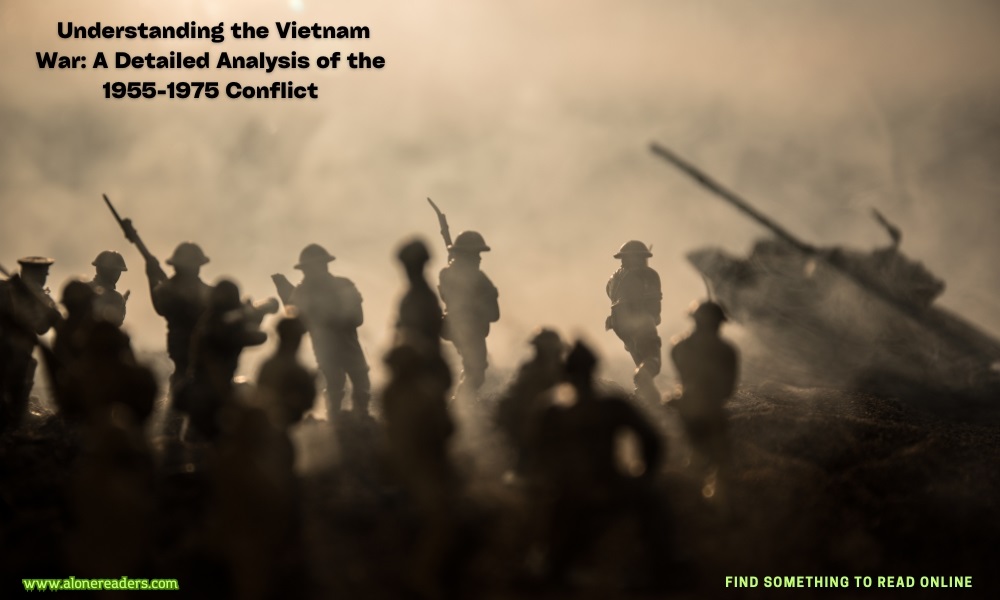
The Vietnam War, also known as the Second Indochina War, was one of the longest and most polarizing conflicts in the 20th century, involving Vietnam and the United States along with their respective allies. This prolonged conflict lasted from 1955 to 1975 and was primarily a struggle between the communist forces of North Vietnam, who were supported by China and the Soviet Union, and the non-communist forces of South Vietnam, backed by the United States.
The origins of the Vietnam War trace back to the end of World War II when the Vietnamese nationalist movement, led by the Communist Party under Ho Chi Minh, declared independence from French colonial rule. Despite this declaration, France attempted to reclaim control, leading to the First Indochina War which concluded with the Geneva Accords in 1954. These accords temporarily divided Vietnam at the 17th parallel, with Ho Chi Minh's communists in the north and an anti-communist regime in the south supported by the United States.
The division was meant to be temporary, with national elections scheduled for 1956 to unify the country. However, the South Vietnamese government, led by Ngo Dinh Diem, refused to hold elections, fearing a likely victory by Ho Chi Minh. This refusal, supported by the U.S., led to increased hostilities. By the late 1950s, the Viet Cong, a communist guerrilla group from South Vietnam, began to wage a war of insurgency against the Diem government, which escalated the conflict.
The U.S. involvement escalated under President John F. Kennedy in the early 1960s, primarily through economic aid and military advisors to support the South Vietnamese government. Following the Gulf of Tonkin incident in 1964—where purported attacks by North Vietnamese forces on U.S. naval vessels were reported—the U.S. Congress passed the Gulf of Tonkin Resolution, which significantly escalated U.S. military involvement. By 1969, under President Richard Nixon, American troop levels in Vietnam reached a peak of over 500,000.
Throughout the conflict, the North Vietnamese and the Viet Cong fought a guerrilla war against the better-equipped U.S. and South Vietnamese forces. The terrain of Vietnam, with its jungles and villages, along with the guerrilla tactics used by the North Vietnamese forces, proved challenging for U.S. military strategies that relied heavily on advanced technology and firepower, such as aerial bombings and large-scale battles.
The war was also notable for its impact on the civilian population. Extensive U.S. bombing campaigns in North Vietnam and chemical defoliants like Agent Orange used in South Vietnam led to significant long-term health issues and environmental destruction. The My Lai Massacre in 1968, where hundreds of unarmed South Vietnamese civilians were killed by U.S. soldiers, further intensified global opposition to the war.
On the home front, the Vietnam War spurred widespread protests across the United States, particularly among college students. The anti-war movement became a significant social and political force, influencing U.S. policy and public opinion. The media's role was pivotal in shaping perceptions of the war, with uncensored reporting and powerful images broadcasting the conflict and its casualties directly into American homes.
Efforts to end the war culminated in the Paris Peace Accords of 1973, which required the withdrawal of U.S. forces and the return of American prisoners of war. Despite the cease-fire agreement, fighting continued until the fall of Saigon to the North Vietnamese forces in 1975, effectively marking the end of the war with the reunification of Vietnam under communist control.
The Vietnam War had profound effects on both Vietnam and the United States. For Vietnam, the war resulted in both massive casualties—estimated in the millions—and severe economic disruptions, while the environmental impact of the war continues to be felt decades later. For the United States, the war led to significant changes in military tactics, a reassessment of foreign policy, and a societal shift that questioned authority and government decisions.
In retrospect, the Vietnam War serves as a powerful lesson in the complexities of international relations, the limits of military power, and the importance of understanding cultural and geopolitical contexts in conflict resolution. The long-lasting impacts of the war continue to influence U.S. foreign policy and military strategies, making the Vietnam War a crucial subject of study for both historical and strategic analysis.